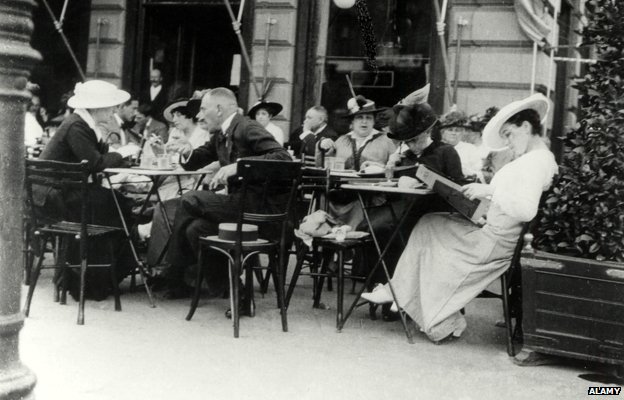However, the situation isn’t as upsetting as it was a century ago, when racial and ethnic disputes and riots raged. In front of Cafe Prueckl, there is a 1913 bronze statue of one of the most loved but also controversial figures in Vienna. A man who transformed Vienna into a modern city.
Karl Lueger, also known as Handsome Karl, was mayor of Vienna between 1897 and 1910. Just wondering if his work is just as much appreciated today as it was during his time, when he provided homes for poor people and for the elderly, when he initiated the municipal gas works, when he extended the pipeline network for people to have Alpine water straight from the tap.
While last year Karl Lueger’s name was removed from one section of the Ringstrasse, many Viennese now want the statue to be taken down. The mayor was so popular for his anti-Semitism campaigns against Vienna’s Jewish communities that when he was elected, the Emperor refused to give his approval. But there is something else Lueger was very popular for: the influence he had on young artist Adolf Hitler.
Until 1913, Hitler used to live in a hostel in Meldemannstrasse, Brigittenau. It was mainly a place for the homeless of Vienna. Men didn’t sleep in the same room but had separate dormitories, lots of bathrooms, a big study room and garden, where young Adolf used to paint, read books and talk politics.
During the last century, this city ‘has gone through hell and back’, says a historian. When the day of the Armistice finally arrived on November 11, 1918, the Austro-Hungarian Empire was already over, the BBC News reports.
Very few people would remember today, the day Emperor Karl left his summer palace of Schoenbrunn and never came back to Vienna. But November 11 is commemorated in a certain way in Vienna: at 11:11 in the morning, down to the Graben shopping street, a military orchestra, wearing iron grey coats, red berets and golden tassels, perform the Fledermaus Quadrille by Johann Strauss.
This how the Carnival begins and for over an hour, the baroque shopping centre becomes the Viennese ballroom, where the women curtsey and the men bow. Whatever happens with the country, whatever happens with the empires, should they come or should they go, the dance will always be there.
“You’ve got Mozart and the Baroque, you’ve got the 19th Century and the Ringstrasse, you’ve even got the Flak towers of the World War Two… Why not focus on them?”, says Bethany Bell, of BBC News Magazine.
